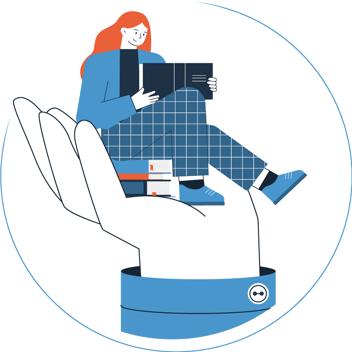
Class is about to start. You see a student sitting in their seat, frantically completing their homework from the night before. You see another student ready to learn and has all their materials prepared, while another may be walking around the classroom still chatting with their peers. Could you predict which students might struggle with learning before they even raise their hand?
For teachers, it’s a matter of asking how inclusive education can be brought to the front, so every student feels supported and included. Most schools already have the answer in their data. But how much of a 360-degree view of the student could it provide?
Inclusive Education: What It Is and What It Isn’t
The Department of Education defines inclusive education as the following:
“Students experience inclusive education when they can access and fully participate in learning, alongside their similar-aged peers, supported by reasonable adjustments and teaching strategies tailored to meet their individual needs. Inclusion is embedded in all aspects of school life, and is supported by culture, policies, and everyday practices.”
Inclusive Education Is Not…
- Participating in a different curriculum with a different teacher or aide (CYPDA)
- Segregating students into ‘special’ schools, classes, or units, whether in the classroom or playground
- Changing students to fit in with current systems
- A favour or privilege
Think about a student who’s quietly falling behind because of language barriers. Or another student who is a star at thinking on their feet, but struggling to deliver assignments and is constantly begging for extensions. A recent report by the Australian Education Research Organisation indicated that it takes approximately 5 to 7 years for students learning English as an additional language to develop the level required to equitably participate in curriculum learning.
Another example is in students with autism, where absorbing and retaining school material can be more effective when provided in formats like recordings or speech-to-text transcriptions. For students with ADHD, increasing engagement and task completion may require adopting strategies such as celebrating small wins more frequently, like gamifying tasks.
Factor these in with demographic, cultural, and socio-economic factors, which can play into a student’s behaviour and performance during their school years. Let’s look into this further.
Looking Beyond Grades
Inclusive education isn’t just about academics. Sometimes, the biggest clues come from attendance or wellbeing data. A student missing classes might be facing socio-economic challenges. Another might be disengaged because of anxiety.
from attendance or wellbeing data. A student missing classes might be facing socio-economic challenges. Another might be disengaged because of anxiety.
Consider the Australian Student Wellbeing Framework as a key framework that encompasses five elements to support school communities in providing students with the strongest foundations for reaching their aspirations.
Learning analytics tools like TrackOne Studio help uncover these hidden stories, enabling schools to act early. Making this happen can strengthen partnerships between schools and families, creating trust and transparency.
Imagine telling a parent, “Your child’s engagement has improved by 20% since we introduced flexible seating. Let’s keep building on that.” This type of data storytelling is incredibly powerful and can truly drive positive outcomes for everyone.
Blakes Crossing Christian College has achieved this kind of success through the use of learning analytics. Courtney Bond, Head of Director of Innovation and Integrated Education, engages and supports this initiative with a monthly newsletter at their school, called the Diverse Learning Digest.
This newsletter features growth outcomes and recommendations based on data stories uncovered from student learning analytics in TrackOne Studio.
From Student Analytics in Spreadsheets to Smart Platforms
Modern learning analytics platforms do more than track grades. They create a 360-degree view of each student, including engagement, wellbeing, and attendance. Now is the time to give your school community a leg up and get to know your future students through learning analytics.
Why Data Is the Secret Ingredient for Supporting Inclusive Education
Without data, teachers are flying blind. They rely on instinct, which is powerful, but not enough when you’re juggling dozens of different needs.
Learning analytics transforms raw numbers into insights that help educators identify patterns, anticipate challenges, and personalise learning, aligning with the Australian Curriculum's call for adjustments for diverse learners.
Now imagine a classroom buzzing with energy, where every student has the tools to succeed, regardless of background, ability, or language. That’s the heart of inclusive education. Teachers juggle dozens of needs every day, and that’s where learning analytics takes the guesswork out of it and becomes a compass guiding your school toward equity and success.
Set yourself up for 2026 with TrackOne Studio’s Learning Analytics Suite by booking a demo!





